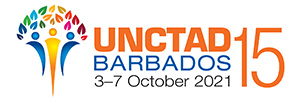These countries generate 40% of global GDP but are home to 60% of the world’s poor. UNCTAD’s chief urges debt relief and trade reform to help them escape the middle-income trap.
© UN Photo/Loey Felipe | UNCTAD Secretary-General Rebeca Grynspan delivers the keynote speech to a UN General Assembly high-level meeting on middle-income countries on 1 April in New York.
Addressing the structural barriers to sustainable development, UN Trade and Development (UNCTAD) Secretary-General Rebeca Grynspan highlighted the paradox faced by middle-income countries: "too rich to be poor" but "too poor to be rich."
Despite generating 40% of global GDP, these countries are home to 60% of the world's poor, underscoring the urgency of focusing on the needs of poor people in these nations.
Ms. Grynspan delivered the keynote speech to a United Nations General Assembly high-level meeting on middle-income countries held on 1 April at the UN’s headquarters in New York.
Three factors contribute to the middle-income trap
She emphasized three key factors contributing to the middle-income trap: poverty, commodity dependence and trade.
Many middle-income countries remain dependent on commodities, with large debt burdens hindering economic diversification and public investment. Trade integration has increased, yet harmful trade restrictions continue to pose challenges.
Call for debt restructuring, trade reform and multilateralism
The UN Trade and Development chief called for a stable mechanism for debt restructuring and long-term affordable financing from global and regional development banks. She also advocated for trade system reform and regional trade agreements to support middle-income countries.
Looking ahead, the 16th UN Conference on Trade and Development (UNCTAD16), set to be held in October in Viet Nam – a middle-income country – will address critical challenges facing these nations, including the digital economy, debt relief and resilient supply chains.
Ms. Grynspan urged multilateralism to help middle-income countries escape the development trap and shape a sustainable, digital and equitable future.
